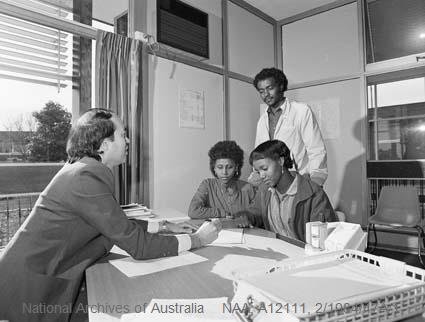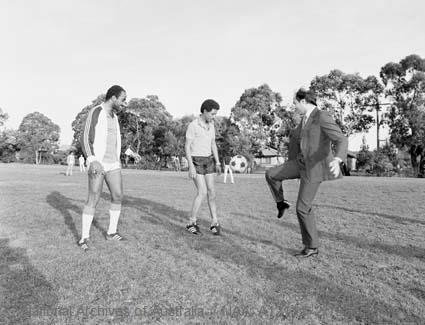Crossroads:
Horn to home
A Still Nomads Creative Research Project.
This is the accesible version of the website. It is only one page and contains summary information of the crossroads project. In the last section there are some image descriptions of featured items from the archive.
A summary of this page is also available in Braille. The Braille translation has been completed by Marisa Sposaro, who is a vision impaired Braille reader. Original Braille code has bee used. It will be available at the Exhibition.
Marisa Sposaro is a radio broadcaster, writer and activtist. She is a presenter on the 3CR program Doin’ Time. Which is every Monday from 4-5pm. She loves her Akido dog Yumi, who is her constant companion.
Exhibition launch Accessibility Information Pack
For the exhibition launch please download the accessibility information pack which contains images, maps, lists and descriptions of activities and spaces. It also includes venue information regarding sensory information, wheelchair users, people who are blind or have low vision, that Deaf and Hard of Hearing.
Download
Commemorating 40 years since the first African refugees arrived in 1984
This project collects personal stories, photos, and memories of the first Black African refugees arriving in 1984 (and some from 1985) from the Horn of Africa.
The archive is a living collection, showcasing migration, resilience, and identity through:
Photographs.
Documents.
Oral histories.
Personal artifacts.
Its purpose is to document these journeys and encourage understanding and dialogue about the effects of migration on individuals, families, and communities.
By making these materials publicly accessible, Crossroads aims to:
Honour the memories of those who shaped community history.
Inspire meaningful reflection on both the past and present.
If you arrived in 1984 through the government refugee program from the Horn of Africa and we haven't connected yet, please email 1984crossroads@gmail.com. It would be an honor to include your story.
What is Still Nomads?
Still Nomads, formally a Melbourne based African Art Collective, is a creative research platform focused on Black African art in Australia.
About community archives
This project draws inspiration from Kameelah Jana Rasheed, who integrates artistic exploration with archival materials to focus on global Black histories and communities. Archiving captures moments in time, whether through social media posts, family photo albums, or boxes of old documents. While anyone can archive, organising and making archives accessible requires resources and community support.
In settler colonies like Australia, archiving resources often favor institutions. Only select communities deemed "worthy" may receive funding for archives that give them narrative control. Independent, grassroots efforts strive to preserve and share histories outside mainstream institutions, resisting colonial narratives. As Rasheed highlights, early Western libraries, museums, and archives often served as tools of imperialism. By documenting and connecting, communities challenge imposed histories, reshaping narratives on their own terms.
The Project Team
Researchers and Archivists: Aysha Tufa and Sára
Artists: Nadia Faragaab, Beaziyt Worcou, Sára, Abdullahi Yusuf, Guled Elyas, and Ammar Yonis
Curatorial team: Guled Elyas and Yasmin Hassen
Graphic designer: Beaziyt Worcou
Historical Context
Before 1984, the Horn of Africa faced major events:
The Derg regime took control in Ethiopia.
Famine spread across the region.
Somalia joined the Arab League.
Ethnic groups like Eritreans and Oromos fought for independence.
Millions of people were displaced. Many fled for safety and settled elsewhere.
Some who came to Australia in 1984 first went to Sudan, where they still have family.
Others moved to Cairo, Egypt, for better jobs and education.
Most of the 1984 arrivals were students, helped by the Australian embassy in Egypt.
The first flight of Black African refugees arrived in Australia on May 11, 1984, from Cairo to Melbourne.
The flight stopped in Athens, Bangkok, and Sydney.
Refugees stayed at the Enterprise migrant hostel in Springvale before moving out.
This migration path is still used today.
Who are Horners?
"Horners" are people from the Horn of Africa—countries like Ethiopia, Eritrea, Somalia, and Djibouti.
They share cultural, historical, and family ties to this area.
The region is very diverse with different cultures, languages, histories, and clans.
Depending on the context, "Horners" can also include people from Sudan, South Sudan, Kenya, and nearby countries.
Earlier Arrivals, Some Horners came to Australia before 1984:
An Oromo student on a scholarship in the 1970s.
A few Ethiopian men in the 1980s.
Somali sailors who arrived in the 1800s.
This project has been funded by Creative Australia and supported by RIMPA.
Featured items with visual descriptions below

A black and white photo of two young Black women sitting at an office desk with another Black man behind him. All three are being shown some paper work by an employee on the other side of the desk. The worker is wearing a suit and only a side profile of his face is shown. There are some papers spread across the table, a window to the left corner bringing in some natural light. There is a tree in the background out of the window. The clothing is 80s with wider lapels on jacket collars and shirts. This photo was taken at an office at the Enterprise Hostel in 1984 in Springvale.

A photograph taken in Springvale. It looks like a class room with a dark green chalk board or cork-board against a white wall. There are are about 5 men stand in the mid ground, all are Black and wearing shades of brown in sports coats and slacks. One Turkish man, is wearing a coat with a traditional Arab thobe and a white kuffiya (religious head cover for men) He has his hand over the shoulder of the of the refugees that arrived to Australia, Abdulwahab Tufa and his other hand is waving at the camera. Everyone in the photo is facing the camera. There are three people sitting down, one woman has turned to face the camera as she is facing someone sitting against the wall. There is a man in the action sitting at the table beside her. Said Guled is in the right turning back.

There are people standing around a barbeque on a concrete driveway. In the background is a red brick house with brown tile roofing. The people standing around include two turkish boys, one facing the house, the other facing the camera. Next to him is a turkish woman in hijab bending down to do something. There is an African man with a short afro that looks like he is cooking something on barbeque on the right. On the left of the stove are 2 Black women, one in ink and the other in red. There is also a man between them but his face and the women in pink is distorted because of the smoke from the barbecue.

A black and white photograph of two Horner men playing soccer in a field near Enterprise Hostel with a man in a suit. The man in the suit works at the Enterprise Hostel. There are some large trees in the distance and the shows of the men and long and stretched towards the back left as the sun shines down on them.

A group of Eritrean men are sitting, standing and leaning on a fence. One is on a bicycle. The are all facing the camera, some a wearing corduroy pans will others are in jeans, with various shirts. The all have short afros. One of the men sitting on the fence has his hands up pretending to pat his friends afro. Behind this is a large road sign in yellow with green text that says "Enterprise centre". Behind the sign is some grass, and some big beautiful trees.

Some of the refugees standing in line as they enter the cafeteria at Enterprise Hostel. There is a board next to them that says "MENU" the menu options are difficult to read out except for the words salad and soup. The floor is a greyish cream linoleum that is shiny, the men are in 80s attire. All are Black but have various skin tones. Flannel, stripes, denim and slacks are the clothing of choice. IN the interior of the building exposed red brick.

A young Black man is standing and smiling at the camera with safety goggles on while he is standing with his hands up on a piece of steel machinary. He has an afro with slight side burns. The background is dark and industrial but the flash lights up the man and the steel machinery parts. This photograph was taken at a car manufacturing factory. Specifically General Motors in Dandenong.
